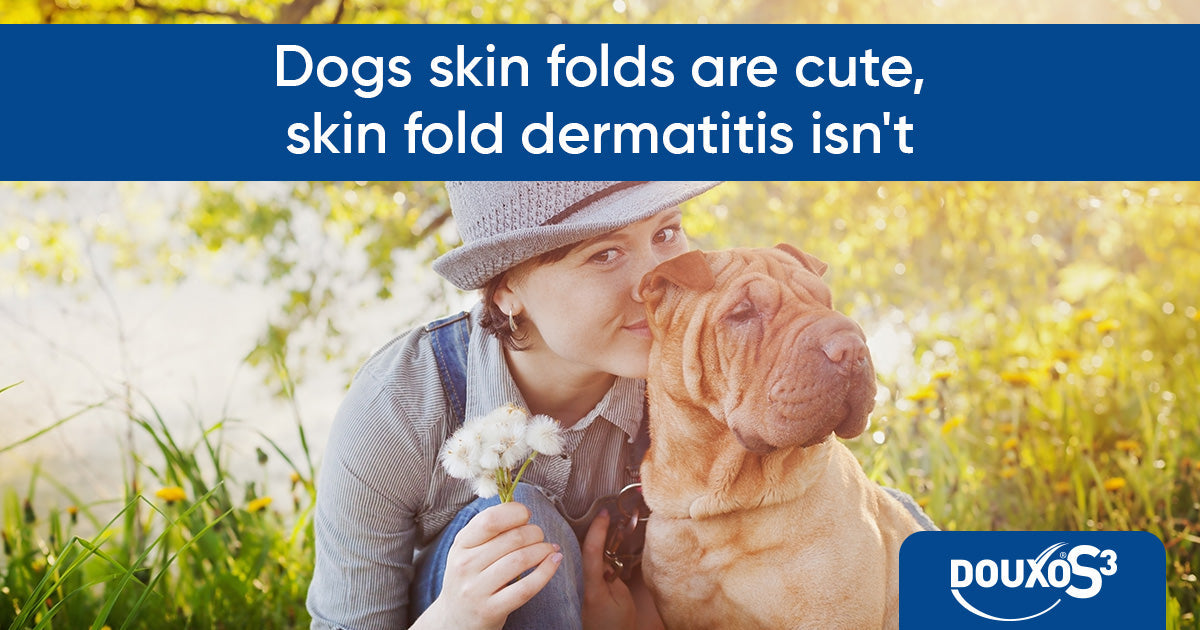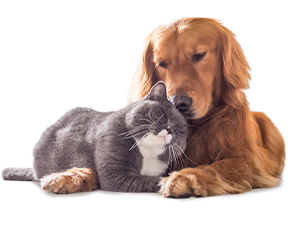
Skin folds are cute - skin fold dermatitis isn't
All dogs naturally have skin folds throughout their bodies, which, in numerous cases, pose no issues. Yet, specific breeds grapple with common and frustrating skin fold diseases like dermatitis. This article will discuss and explore why skin fold diseases occur, how they are recognised and some of the management methods.
What is skin fold dermatitis?
Skin fold dermatitis in dogs, also known as 'intertrigo,' develops due to the frictional trauma caused by skin folds rubbing together and the subsequent rise in humidity, fostering microbial overgrowth on these skin surfaces. Termed alternatively as 'skin fold pyoderma,' it may progress into a genuine infection, featuring the distinct presence of pus on the skin. This infection can be attributed to bacterial organisms or yeast (Malassezia) overgrowths, often involving a combination of both in the majority of cases
Which breeds are most predisposed?
We've selectively bred dogs for cuteness, emphasizing short noses, big eyes, and a baby-like face. Regrettably, this intentional breeding has heightened the susceptibility to facial fold dermatitis. The reduction in facial bone structure has led to an abundance of adorable wrinkles, creating ideal environments for bacterial growth.
Predisposed breeds include Cocker spaniels and Shar-peis, for similar reasons, with purebreds being more likely to be affected than crossbreeds. Recent studies revealed that the highest proportion of skin fold dermatitis diagnoses each year were in English Bulldogs, French Bulldogs, and Pugs.
How will you recognise if your dog has skin fold dermatitis?
Often the clinical history and presenting signs are enough to formulate a diagnosis for a patient. Clinical signs include a foul odour and smell, excessive rubbing or itching of areas, and skin colour change, such as redness. Skin fold dermatitis is usually a focal problem affecting one specific area. Various types of skin fold dermatitis can affect dogs, involving the neck, body, vulva, and tail. Tail dermatitis is especially prevalent in certain dogs with corkscrew tails, such as certain brachycephalic breeds. Further diagnosis can be made by taking swabs of the affected areas to send to laboratories for analysis of culture and sensitivity.
How is it treated?
The main aim of treatment and management of skin fold dermatitis is to reduce inflammation and eliminate the infection if present. In most cases, long-term lifetime management is required to keep the condition under control, as stopping and starting treatments ultimately may result in recurring flare ups. When nothing works despite all efforts, corrective surgery may be suggested by your veterinarian.
However, usually skin folds will be well managed with topical application such as wipes or sprays, as these products target the problem on those small areas on the skin directly, without the need of systemic oral medications. Your vet will likely prescribe topical medications and in more severe cases, initial control may involve the administration of medications to reduce the inflammation and the level of itching.
DOUXO® S3 CALM is a soothing solution designed to address itchiness and irritation in canine skin, particularly tailored for skin fold issues. This formulation actively safeguards the skin barrier by preserving hydration. The DOUXO® S3 CALM Pads, perfectly shaped and sized for convenient application on the skin fold, work deeply to restore a healthy skin balance while providing the added benefits of balancing skin flora. For overall body care, DOUXO® S3 Shampoo and Mousse complement the targeted treatment of folds with the Pads, offering a versatile and effective approach to your dog's regular skin care routine.
In instances of active infection, DOUXO® S3 PYO helps to restore balance. Clinically tested for antibacterial and anti-yeast effects, it proves to be an effective remedy for persistent skin fold dermatitis in dogs when a microbial imbalance happens. The easy and precise application of DOUXO® S3 PYO Pads, for example wrapped around your finger, ensures targeted efficacy in the affected folds. When used in conjunction with the Shampoo and Mousse, DOUXO® S3 PYO provides comprehensive coverage when larger parts of the body are involved.
In conclusion, skin fold dermatitis is a prevalent challenge in veterinary care, notably affecting breeds as brachycephalic. Prompt recognition of clinical signs—foul odour, itching, and skin discoloration—is crucial for diagnosis and early management. The focal nature of this dermatitis requires targeted and easy to apply long-term management. Topical solutions like DOUXO® S3 CALM and DOUXO® S3 PYO prove pivotal, addressing surface concerns, promoting overall skin health, and balancing skin flora if necessary. Proactive easy management is therefore essential in those skin health issues, for that skin wrinkles and folds remain as beautiful as they should be.
















